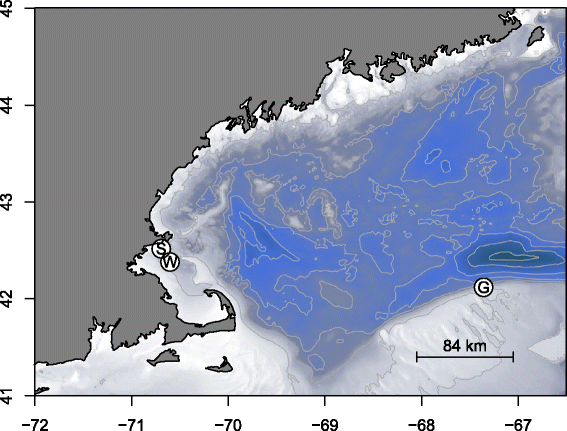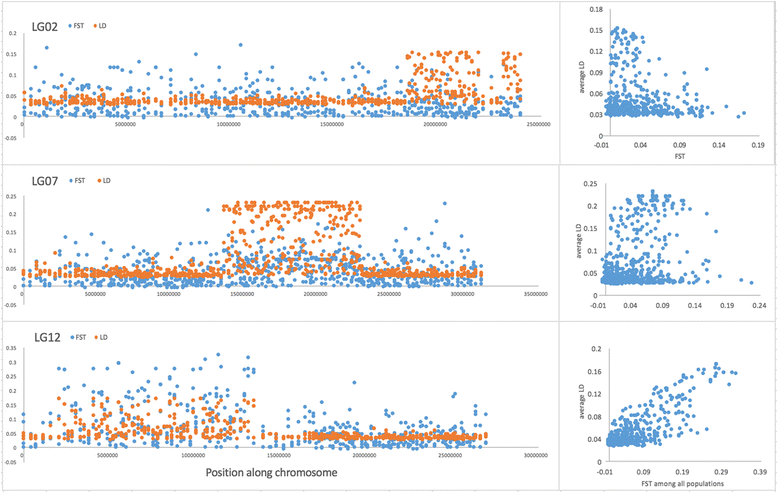Highly localized divergence within supergenes in Atlantic cod (Gadus morhua) within the Gulf of Maine
- PMID: 28359300
- PMCID: PMC5374575
- DOI: 10.1186/s12864-017-3660-3
Highly localized divergence within supergenes in Atlantic cod (Gadus morhua) within the Gulf of Maine
Abstract
Background: Atlantic cod (Gadus morhua), is known to vary genetically across the North Atlantic, Greenland, and Newfoundland. This genetic variation occurs both spatially and temporally through decades of heavy fishing, and is concentrated in three linkage disequilibrium blocks, previously defined by pedigreed linkage mapping analysis. Variation within these genomic regions is correlated with both seawater temperature and behavioral ecotype. The full extent and nature of these linkage groups is important information for interpreting cod genetic structure as a tool for future fisheries management.
Results: We conducted whole genome sequencing for 31 individual cod from three sub-populations in the Gulf of Maine. Across the genome, we found 3,390,654 intermediate to high frequency Single Nucleotide Polymorphisms (SNPs). We show that pairwise linkage analysis among these SNPs is a powerful tool to detect linkage disequilibrium clusters by recovering the three previously detected linkage groups and identifying the 1031 genes contained therein. Across these genes, we found significant population differentiation among spawning groups in the Gulf of Maine and between Georges Bank and Gulf of Maine. Coordinated divergence among these genes and their differentiation at both short and long spatial scales suggests that they are acting as linked supergenes in local adaptation of cod populations.
Conclusions: Differentiation between SNPs in linkage disequilibrium blocks is the major signal of genetic differentiation between all groups tested within the Gulf of Maine. Our data provide a map of genes contained in these blocks, allowing an enhanced search for neutral genetic structure for demographic inference and fisheries modeling. Patterns of selection and the history of populations may be possible to identify in cod using this description of linkage disequilibrium blocks and future data sets to robustly separate neutral and selected genetic markers.
Keywords: Atlantic cod; Gadus morhua; Genomic divergence; Gulf of Maine; Linkage disequilibrium; Linkage map; Supergene.
Figures




References
Publication types
MeSH terms
Substances
LinkOut - more resources
Full Text Sources
Other Literature Sources

